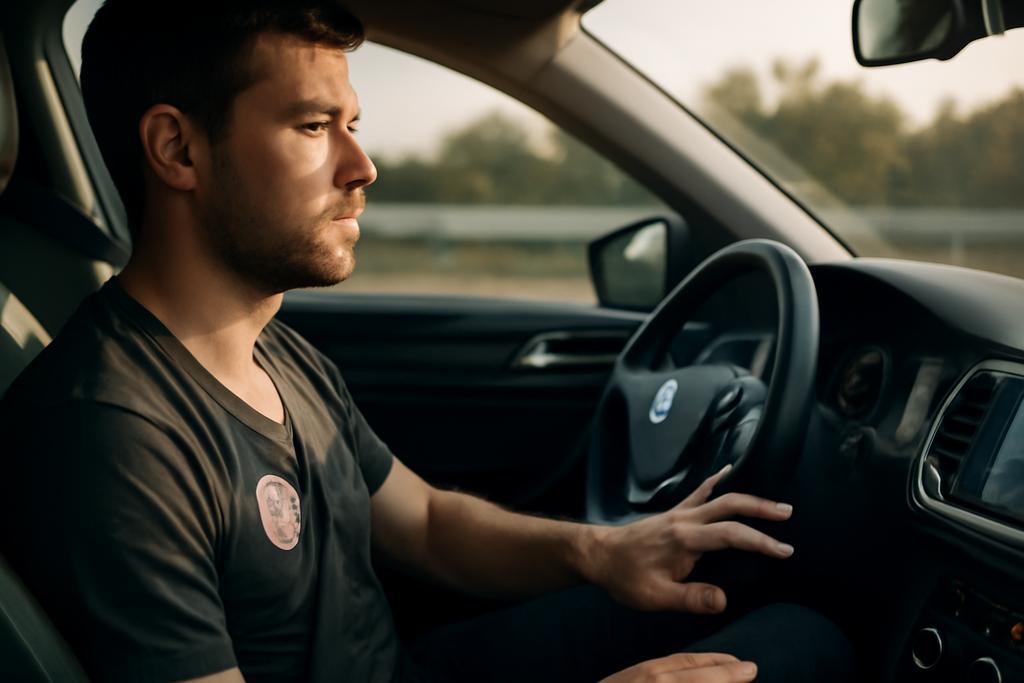The hum of the engine, the rush of the highway—driving is a symphony of sensations. But what if your car could understand not just your actions, but your inner state? What if it could detect subtle shifts in your physiology, your stress levels, even your fatigue, before you consciously realize them yourself?
A New Window into the Driver’s Mind
Researchers at the Hong Kong University of Science and Technology (Guangzhou), Tsinghua University, and Sichuan Agricultural University have created PhysDrive, a groundbreaking dataset that aims to do just that. Led by Jiyao Wang, Xiao Yang, Qingyong Hu, and Dengbo He, this project represents a massive leap forward in in-vehicle driver monitoring. Instead of relying on clunky, intrusive sensors, PhysDrive employs contactless technology, capturing vital physiological information in a way that’s both unobtrusive and remarkably accurate.
Think of it like this: traditional methods of monitoring a driver’s health or stress levels often involve wires, straps, and other devices that can be distracting and uncomfortable. PhysDrive, in contrast, harnesses the power of multiple sensors—cameras and radar—to create a comprehensive picture of a driver’s physiological state without ever making physical contact. It’s the difference between a full-body MRI and a quick temperature check.
The Power of Multimodal Sensing
The beauty of PhysDrive lies in its multimodal approach. Instead of relying on a single type of sensor, the researchers integrated several complementary technologies: RGB cameras (standard color cameras), near-infrared (NIR) cameras, and millimeter-wave (mmWave) radar. Each sensor brings unique advantages:
- RGB cameras capture color information, providing data for remote photoplethysmography (rPPG), a technique that uses subtle color changes in the skin to estimate heart rate.
- NIR cameras offer more stable readings than RGB cameras, especially in challenging lighting conditions, since they operate in the near-infrared spectrum—invisible to the human eye.
- mmWave radar operates completely independently of light, measuring the tiny chest movements associated with respiration and heartbeat. It’s also more private than video-based methods.
The combination of these sensors creates a robust and resilient system. If one sensor struggles under particular conditions (for example, an RGB camera performing poorly in low light), the others can compensate.
Driving into the Real World
Past datasets for driver monitoring have often been collected in artificial, controlled environments. This significantly limits their real-world applicability. PhysDrive, however, radically changes this. Data was collected across a wide range of naturalistic driving conditions in Guangzhou, China, including:
- Different lighting conditions: from bright sunlight to cloudy days to nighttime driving.
- Varying driver actions: both stationary driving and situations where the driver was engaged in conversation.
- A spectrum of road conditions: ranging from smooth, unobstructed roads to congested and bumpy ones.
- Multiple vehicle types: to account for how the car’s structure might influence sensor readings.
This emphasis on real-world diversity is crucial for training robust algorithms. A model trained on PhysDrive is more likely to perform effectively in diverse, unpredictable driving scenarios than one trained on artificial data.
Beyond the Data: A New Benchmark for Innovation
The PhysDrive dataset is more than just a collection of sensor readings. It’s a comprehensive benchmark for evaluating driver monitoring algorithms. The researchers included extensive benchmark results from a variety of state-of-the-art models—both traditional signal-processing methods and modern deep learning techniques—across all modalities and driving conditions. This allows researchers to easily compare their algorithms’ performance against a well-defined standard, spurring innovation in the field.
Moreover, the entire dataset—including raw data, processing tools, and benchmark code—is publicly available, fostering collaboration and transparency. This open-source approach ensures that the benefits of PhysDrive extend far beyond the research team.
The Future of Safer Driving
PhysDrive’s implications are far-reaching. Imagine a future where cars can proactively detect drowsy drivers or those experiencing medical emergencies, potentially preventing accidents before they even occur. This dataset moves us significantly closer to that reality. The ability to unobtrusively monitor a driver’s physiological state opens the door to more intelligent, adaptive, and ultimately safer vehicles.
By providing a realistic and comprehensive benchmark for in-vehicle driver monitoring, PhysDrive is not only a technological achievement, it’s a significant step towards a future where technology works with us to make our roads safer and our commutes more comfortable.










